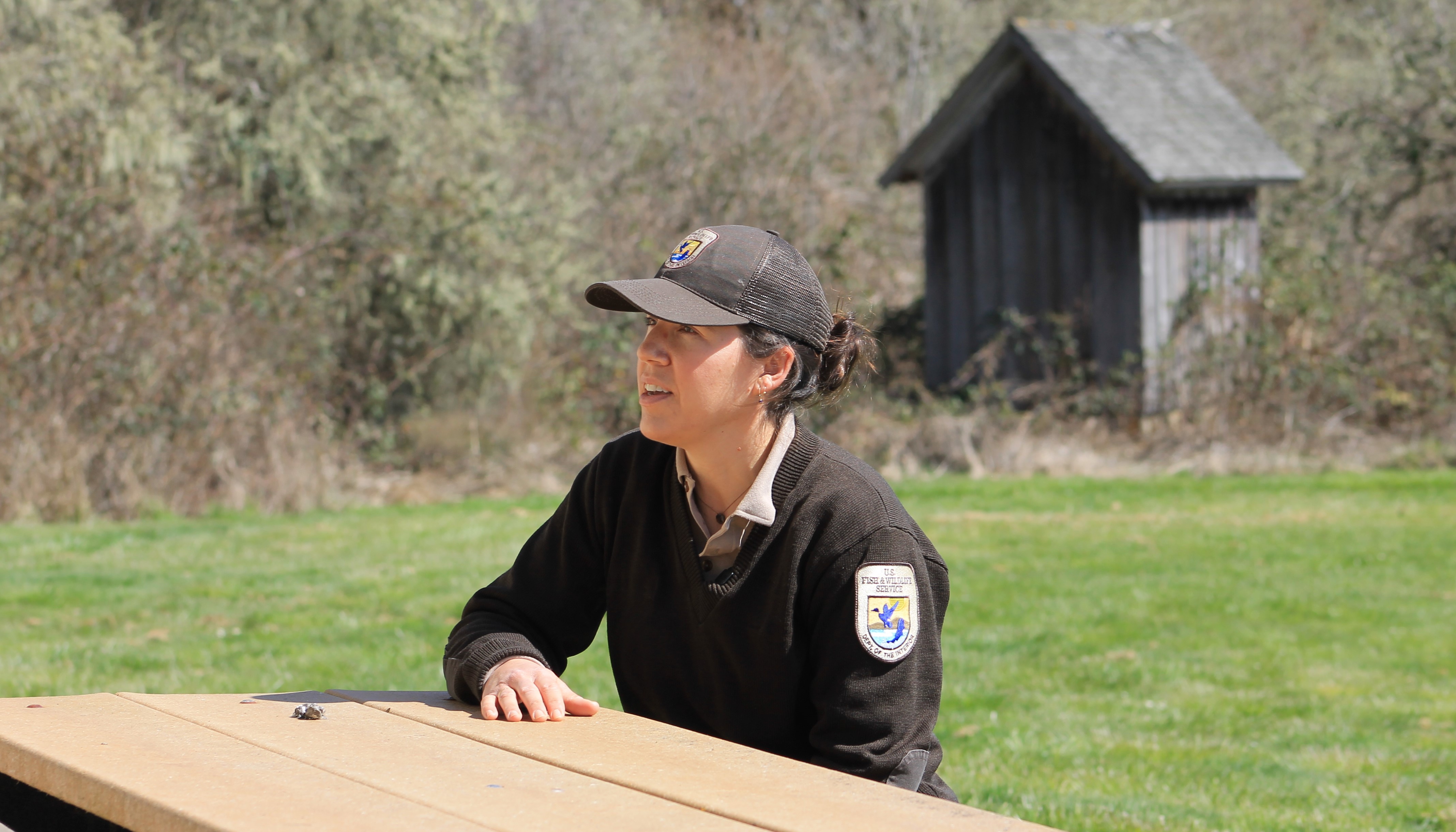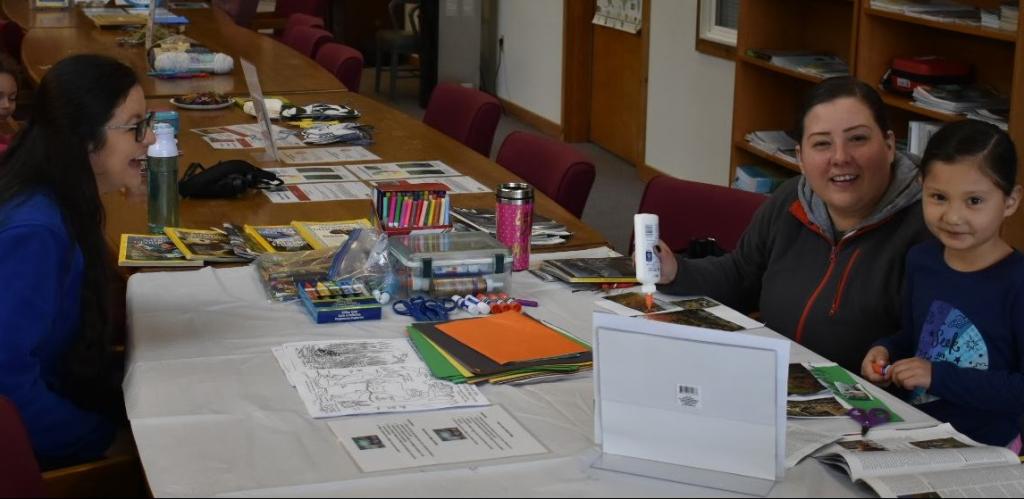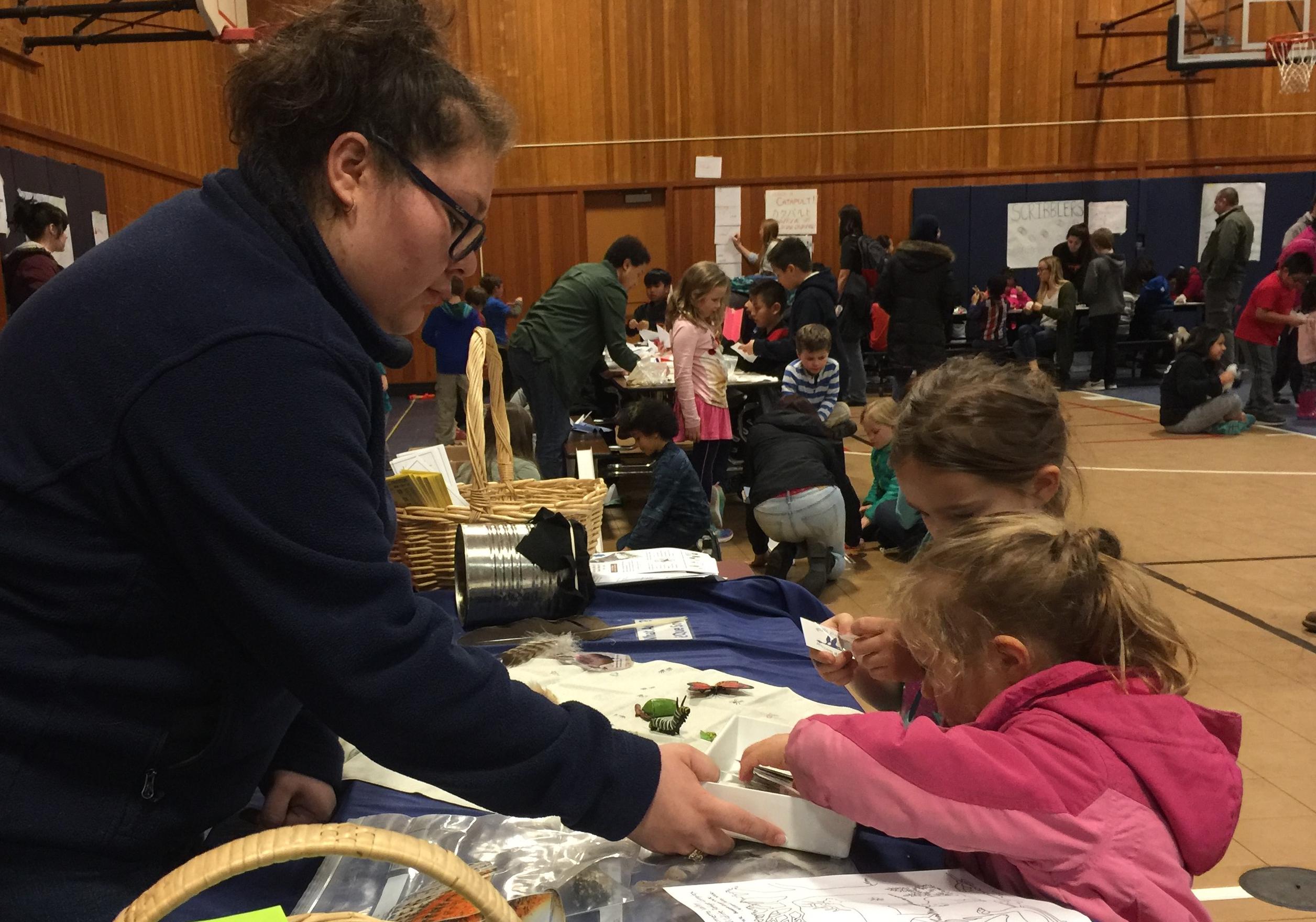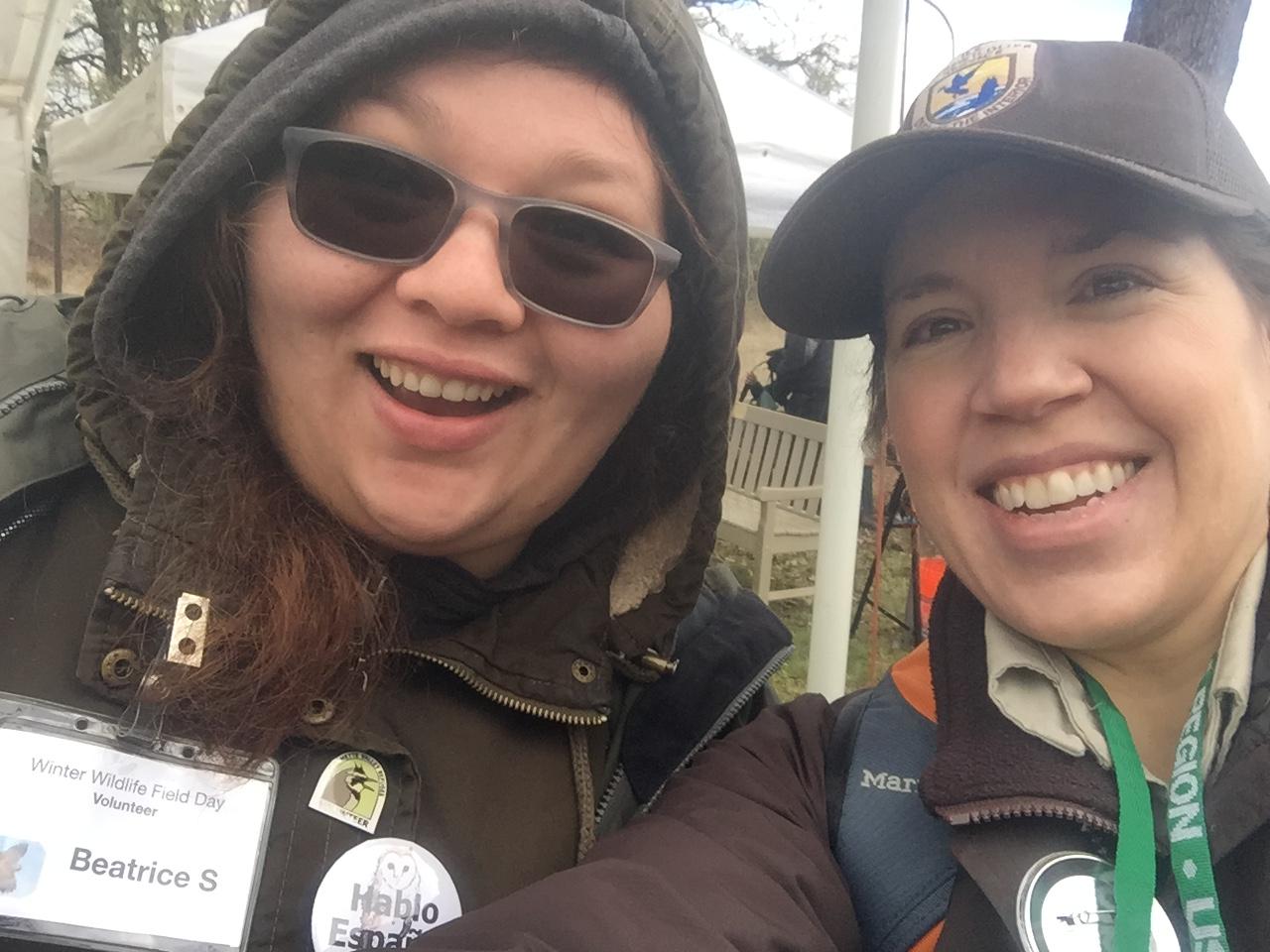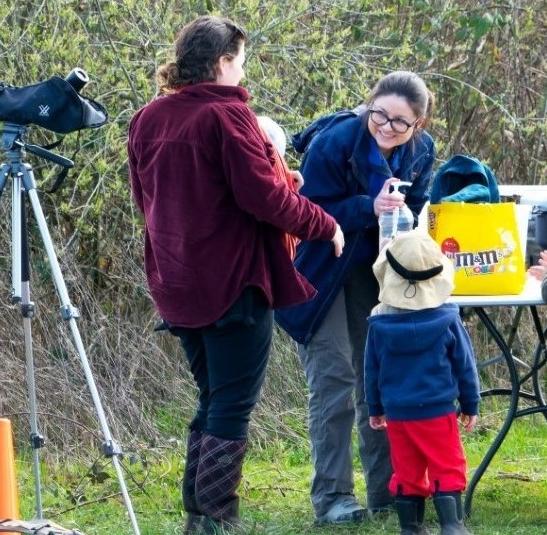
Leading a Culture Change: Willamette Valley Refuges Focus on Reaching All Audiences
Guest Blogpost by Brent Lawrence, Public Affairs Officer for the U.S. Fish and Wildlife Service's Pacific Northwest Region
November 2021
Samantha Bartling knew something was missing from the trails at the Willamette Valley National Wildlife Refuge Complex.
The three refuges in the Willamette Valley National Wildlife Refuge Complex – Baskett Slough, Ankeny and William L. Finley – are well used and loved by many people. The refuges, located along the Interstate 5 corridor and between Eugene and Salem in western Oregon, attract more than 320,000 visitors annually.
What was missing? People of color who reflected the diverse local population.
People of Latino heritage comprise about 25% of the population in the communities around the refuges, but few members of this growing audience were finding their way to these public lands.
“I could tell that the people who were visiting the refuges weren’t representative of the diverse communities who surrounded it,” said Bartling, visitor services manager for the Willamette Valley NWR Complex. “I asked myself how we could provide a visitor experience for the whole community. If I don’t see more of my local community here, how can I change that?”
Finding a way to bridge that disconnect became a priority for the Willamette Valley National Wildlife Refuges.
Leading the Charge
Damien Miller, the project leader for the Willamette Valley NWR Complex, already knew the importance of connecting with the Latino population. Latinos are the fastest growing segment of the U.S. population, and national wildlife refuges are not always perceived as welcoming for Latinos due to language barriers and not being accustomed to the concept of public lands.
The idea of being more inclusive isn’t new to the National Wildlife Refuge System. Refuge leadership – both nationally and locally – has stressed the need to connect with local communities. It’s a priority for the Department of Interior and U.S. Fish and Wildlife Service to advance racial equity by providing wildlife-related education and recreation opportunities to underserved communities, particularly in urban areas.
Bartling, with Miller’s full support, came up with a plan to engage with the local Latino community about the opportunities available on their refuges.
“We agreed that we needed a focused effort to get our web pages and information translated into Spanish and to learn more about our local Latino population so we could better attract and serve this fast growing segment of our constituents,” Miller said. “Sam is passionate about wanting our public lands to be for everyone … and she’s right. We want everyone to know about the opportunities here and the benefits of outdoor recreation.”
The Willamette Valley NWR Complex launched the Hispanic Outreach Program in 2015. It started with the basic premise that the refuge complex wanted all people to know that public lands are open to everyone. To achieve that, it meant adding to the refuges’ offerings instead of eliminating existing programs or opportunities.
“The audience who uses the refuges already know about the birds, elk and hikes,” Bartling said. “But there are folks who don’t know we’re here, and we need to send a different message and have different activities so they know we’re here. Let them know it is safe, and they’re welcome to come and have a good time.”
The first year was a lot of trial and error.
Bartling learned that Latino is the better term because it is more inclusive of the whole community. It’s more than just outreach, too; it’s working with and alongside folks for the long-term. Bartling also realized that the program wouldn’t start, reach a goal, and then stop. “It’s a culture change at the refuge. It’s something that we want to get into that never stops, always improves and we keep trying to reach more people.”
She also learned that she needed help.
The Program Coordinators
Bartling searched out funding for a temporary position that would lead the renamed Latino Engagement Program. She reached out to Environment for the Americas, a group with a mission to create the next generation of conservationists by connecting people with diverse backgrounds to nature.
Environment for the Americas helped connect Bartling with Beatrice Serrano Martinez, who became the program’s first coordinator in 2016.
Martinez was the perfect fit for the program. From Salem, Oregon, she already knew the area and the Latino community. She also loved the outdoors, but wasn’t familiar with the National Wildlife Refuge System.
Who better to start a program designed to attract people who have a similar background?
“I’ve always been an outdoor person, and growing up my mom was all about getting us outdoors,” Martinez said. “But I didn’t know the refuge system existed. Sam was my mentor, and we built this program from nothing. We created a framework for it with a lot of the basic diversity, equity and inclusion work such as translating printed materials and signs, just making it more inclusive and welcoming.”
Martinez also knew the actual success of the program required more than a few bilingual seminars and signs. Success was dependent on spending a lot of time at Latino events and meetings, talking with the community and its leaders
“Here’s the thing about the Latino community – we are very good at mouth-to-mouth communications. That’s how we share our experiences,” Martinez said. “When we do something fun, that is how we encourage others to go. Building at the community level is so important.”
Martinez worked for the refuge for 18 months, before the term position ended. Martinez moved on to Big Brothers Big Sisters in Portland, where she continues to share her passion for teaching young people about the outdoors.
Isabel Justiniano stepped in as the next coordinator, and worked in the position from October 2018 to June 2020. Following Martinez’s lead, she continued to make inroads with the Latino community.
She worked with partners to create monthly bilingual programs at all three refuges; participated in community science nights at the local elementary school; held in-person meetings with Latino groups around the community; and continued to incorporate the Latino community into the Winter Wildlife Field Day event at the refuge.
The refuge also developed a bilingual preschool program at Ankeny NWR.
“With the new nature center at Ankeny, we wanted to do something more to engage with the Latino community in that area,” Justiniano said. “The bilingual preschool program was something we saw as a need for the Latino community and it was a great way to introduce the community to nature and the refuge.”
Justiniano is now a graduate student in Oregon State University’s master’s program. Her thesis is focused on Latino communities in the Willamette Valley, and understanding how their cultural beliefs influence their outdoor recreation habits.
She fondly looks back at her successful experience at the refuge.
“A year and a half sounds like a lot of time,” Justiniano said. “But to establish relationships with communities that are underrepresented and that you’re really working with to build that trust, it takes a lot of time and commitment. It is great to see the program is working to grow. I’m excited to see what this means for the future of the relationship between the Latino community and the refuges.”
Eduardo Gonzalez-Dorta stepped in as the third Latino Engagement Program Coordinator, and he started at the most challenging time possible -- October 2020 during the COVID pandemic.
The Winter Wildlife Field Day was expanded from one day to two weeks and was taken online with the help of 18 community partners and extended to a two week period. The program offers myriad opportunities to learn about nature and wildlife in both English and Spanish.
“My favorite thing – the thing that makes me feel like I’m doing the most and doing the right thing – is when I gave out the reward patches for the Winter Wildlife Field Days,” said Gonzalez-Dorta, who finished his term in June 2021. “When a family comes to me, and they speak to me in Spanish saying, ‘Thank you for putting extra effort to accommodate us so I can teach my kids about wildlife in Spanish.’ That is the biggest reward. I’ve always cared about people being happy out here at the refuges and knowing we care.”
Dionné Mejía has witnessed that caring partnership first-hand.
She works for the Institute of Applied Ecology in Corvallis, Oregon, which has a mission to conserve native species and habitats through restoration, research and education. The Institute for Ecology is part of the Willamette Laja Twinning Partnership, and through this partnership Mejía coordinates Aves Compartidas – which translates to ‘Shared Birds.” It’s a collaborative bilingual education program for youth that connects students internationally and focuses on migratory birds and watersheds.
William L. Finley NWR has become an essential part of that effort over the past three years.
“We did a field trip for fourth and fifth graders to Finley Refuge and other in-person activities back before COVID,” Mejía said. “These programs are important because we’re connecting with kids, and through them with their families. A lot of the times these families haven’t been to the refuge or other areas to be exposed to wildlife conservation, so it’s important to broaden the community that uses those places and learns about wildlife and conservation.”
Next Steps
Bartling is encouraged by the progress that has been made. The Winter Wildlife Field Days went from having zero Spanish-speaking volunteers to 26. The refuge complex has secured funding for a 12-month position, instead of the previous 9-month term jobs. That will allow the refuge to have a more consistent presence to expand the reach of the Latino Engagement Program. Griselda Landa-Posas started in late October as the new Latino Engagement Coordinator.
More people from the Latino community are regularly visiting the refuges.
Harumy Concepcion is one of the people who has found a home on the refuges’ trails. Concepcion, a county health navigator who works with the local school district, goes bird watching at Ankeny and Baskett Slough refuges.
“I feel strongly about the importance of the Latino Engagement Program,” Concepcion said. “Just knowing there is a program there makes me as an American who is Latino more comfortable to go there. I didn’t have access to a lot of wildlife areas growing up in Southern California. I never saw birding as something for people like me. But because of the refuges and the opportunities here, I enjoy it now.”
Concepcion has also integrated the refuges into her work. Her job helps connect the local Latino community with ways to improve their health, such as locating medical resources, insurance options and ways to improve their overall health. That includes lowering stress, exercise and other benefits that can be found through national wildlife refuges.
“The refuges are a great way to get out and reduce stress,” Concepcion said. “Minority populations are at higher risk for chronic illness, and getting outdoors definitely helps improve future health outcomes. I know from speaking to other first-generation families, many are not aware of the opportunities that are available. That is why the Latino Engagement Program is so important.”
Despite the successes, Bartling knows there is still a lot of work ahead for the team at the Willamette Valley NWR Complex.
“We’ve removed a lot of barriers,” Bartling said. “We see Latino families represented at almost every event now. Partner organizations in conservation and education now have Latino staff. But there’s room for more. It’s literally a culture change in how we reach people … all people.”
There has been one additional, unexpected bright spot. One that puts a big smile on Bartling’s face.
“When we’re reaching out to an underserved audience, it does more than just reach people who speak Spanish. It sends the message that we’re available for more people than just those who speak English as a first language,” Bartling said. “Visitor numbers are up across the board. I’ve also been seeing a lot more diversity in the people who visit the refuges, and in emails and calls with questions about the refuges. I’ve had a lot more interactions with the Asian community and the Russian community.
“It’s great to see our whole audience grow.”
---
Editor’s note: Latino is a noun or adjective for a person from, or whose ancestors were from, a Spanish-speaking land or culture or from Latin America. Some prefer the recently coined gender-neutral term Latinx or Latine. In conversations between the refuge and the local Latino/e/x community, Latino was their overwhelmingly preferred term. For this article and for the Latino Engagement Program, the Service’s Willamette Valley National Wildlife Refuge Complex has elected to use the term Latino.
Restoration
Research
Education
Contact
Main Office:
4950 SW Hout Street
Corvallis, OR 97333-9598
541-753-3099
info@appliedeco.org
Southwest Office:
1202 Parkway Dr. Suite B
Santa Fe, NM 87507
(505) 490-4910
swprogram@appliedeco.org
© 2025 Institute for Applied Ecology | Privacy Policy
